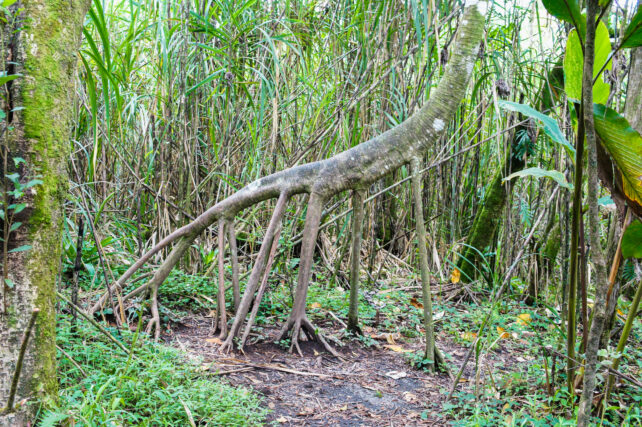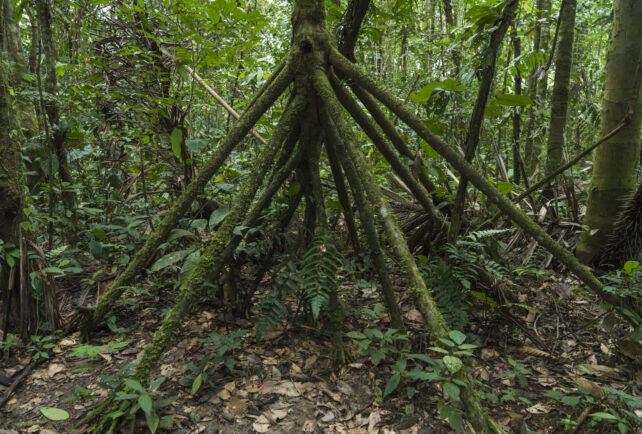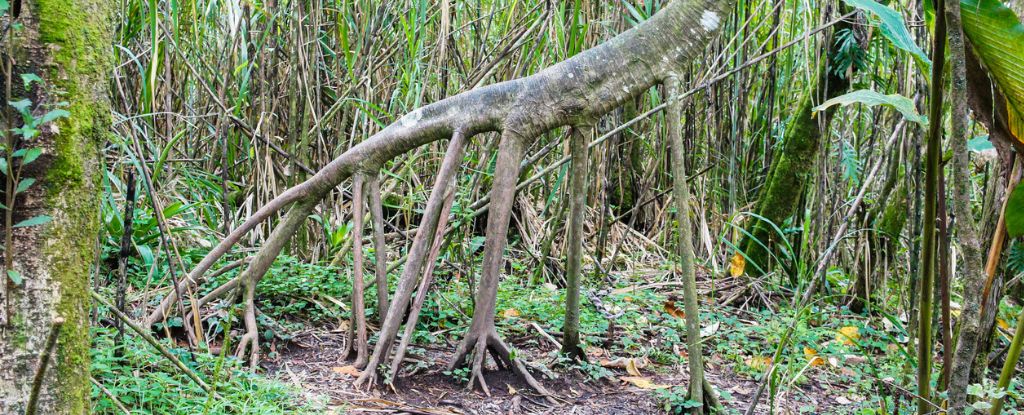The stories we tell ourselves about the natural world can sometimes stretch far from the truth.
For years, visitors to the rainforests of Central and South America have been told of a tree that slowly ambles around on its stilted roots.
The lore of the so-called walking palm (Socratea exorrhiza) has persisted since at least 1980 when anthropologists John H. Bodley and Foley C. Benson detailed the plant’s unbelievable behavior in a scientific paper.
According to Bodley and Benson, when toppled by falling trees or branches some palms in eastern Peru can “right themselves and “walk” out from under the obstacle”, away from their point of germination.
The palms were said to chase sunlight through the forest using the dozen or so roots that spring from their elevated trunks.
Sometimes, these roots sit several meters above the ground, and as Bodley explained all those decades ago, when they break away or rot, newer legs can probe patches of soil that are slightly further away.
To this day, rainforest guides in Latin America commonly tell tourists that walking palms can shift their position as much as 20 meters a year.
But while a few individual scientists think there could be a grain of truth to the narrative, the tip-toeing nature of this tree is most probably a myth.
When you look at the evidence, it doesn’t really have legs to stand on.
In 2005, tropical ecologist and palm expert Gerardo Avalos published a study that found S. exorrhiza does not actually wander from its spot of germination.
In the paper, Avalos and his colleagues agree that when the walking palm is knocked over, it can rapidly grow new roots to deal with the loss of stability, but it does not actually move very much at all.
In an interview with the Italian illustrator and writer, Elisa Paganelli, Avalos explains that the walking palm is fixed to its place of germination, although, like other rainforest plants, it can still stretch itself somewhat to seek the light.

The scientist admits that “it’s kind of impressive and amazing to believe” that the walking palm can actually walk, but he says “it’s just a legend.”
“For one thing,” Avalos points out in a correspondence with Benjamin Radford from the Skeptical Inquirer in 2009, “a large cone of stilt roots takes a long time to develop. Changes in canopy light conditions are more dynamic, with holes in the canopy being open at the same time that others are closed.”
The idea that a walking palm could move fast enough to seek out these light gaps is unrealistic, Avalos argues.

In 2007, another study on the curious species came to the same conclusion as Avalos and his colleagues.
The real mystery that still persists, however, is why the walking palm has such long legs if not to walk.
Back in the 1960s, scientists thought these extreme roots evolved to cope with flooding events, but there’s not a lot of convincing evidence to support that idea either.
In more recent years, researchers have argued that in dense rainforests, the stilt roots of walking palms allow the species to more easily increase its height and stability, exploiting light gaps in the canopy overhead without expending energy on a thicker trunk.
While many will no doubt continue to talk the talk about this tree, the evidence at this stage suggests the species does not actually walk the walk.
That’s a tall tale.





